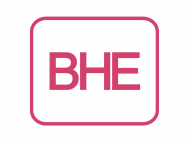A growth market in transition
At Security Expo 2025 in Berlin, the focus was on a topic that is becoming increasingly important not only for security service providers, but also for construction companies, industrial enterprises and operators of critical infrastructure: mobile video towers. Under the motto ‘The year is 2030 – the market comprises 34,000 mobile video towers. Where do you want to be?’ David Smyczek and Alexander Lerch from Smyczek Consulting presented their analysis of the market, its development and the associated opportunities and challenges.
With more than ten years of experience in the mobile security solutions segment, the experts have a deep understanding of how this market has emerged and where it is heading.
Their analysis shows that mobile video towers are no longer a marginal issue, but a central component of modern security concepts.
From niche product to strategic security tool
Less than a decade ago, the presence of mobile video towers on the German market was negligible. Today, according to estimates by Smyczek Consulting, over 20,000 systems are in use. Forecasts for 2030 predict an increase to 34,000 systems, with potential market saturation at around 50,000 units.
This development has not been driven solely by technological innovations. A key factor is the growing pressure from security threats — above all, thefts on construction sites. According to industry reports, such incidents caused damage amounting to over €220 million in 2023. Insurance companies imposing increasingly stringent security requirements and a growing awareness of prevention are significantly driving demand for mobile video towers. David Smyczek sums it up as follows: ‘Without pressure from insurers and high claims costs, this industry would not have grown at this pace.’
Growth drivers and market dynamics
Growth in this segment is based on several key pillars. The increased need for security is a central driving force. Construction sites, logistics centres and critical infrastructures are increasingly faced with challenges that require flexible and mobile security solutions. Mobile video towers offer a scalable answer here: they are quick to deploy, flexible in terms of positioning and technologically expandable.
In addition, regulatory requirements are creating additional momentum. Laws such as the Kritis-Dach-Gesetz (Critical Infrastructure Protection Act) and NIST2 requirements set higher standards for the protection of critical infrastructure. For companies, this means not only compliance, but also the opening up of new market segments. Last but not least, technological advancement is a significant growth driver. The integration of artificial intelligence (AI) for image analysis, drone technology for on-site inspection and robotic components for autonomous patrols is increasingly becoming the norm. Alexander Lerch emphasises: ‘The integration of new technologies will change the industry forever.’
Market structure and challenges
The market for mobile video towers is characterised by a high degree of concentration: Smyczek Consulting has identified over 80 providers, with the ten largest controlling around 83 per cent of the market. On the one hand, this means stability for large customers, but on the other hand, it also means competition and opportunities for smaller providers who differentiate themselves through innovative solutions.
As size increases, so do the operational challenges. Smyczek describes it this way: ‘With a fleet of around 100 systems, you start flying blind.’
Companies are faced with questions such as: Where are the systems located? When will they be returned? How is demand developing? How can processes be made transparent? These operational aspects require efficient process management and a clear strategy.
Service instead of technology – a strategic approach
A central credo of Smyczek Consulting is: service instead of pixels. This means that the added value of mobile video towers lies not only in the technology, but also in comprehensive support, process design and customer benefits. David Smyczek emphasises how important it is to define a clear ‘why’: “Some companies have a sales target, but no “why”. Only those who can clearly communicate their vision will be able to retain customers in the long term. This includes a clear target group analysis, the definition of a USP (unique selling proposition) and the development of transparent processes. “
The strategic sequence includes: business plan, concept, USP, process structure, personnel recruitment and a consistent service orientation.
Technology as a competitive factor
Technology is increasingly becoming a key differentiator. AI-supported video analysis speeds up the evaluation of alarm situations and reduces false alarms. Drone integration enables rapid on-site verification and expands the range of possible applications. In the medium term, robotics opens up the prospect of autonomous security solutions.
Technological support is becoming a necessity, especially in view of the shortage of skilled workers in the security sector, which currently has around 18,000 vacancies. ‘Robotics will be an incredibly good approach,’ explains Smyczek.
Regulatory framework – risks and opportunities
New security standards create both obligations and opportunities for providers of mobile video towers. The Kritis-Dach-Gesetz (Critical Infrastructure Protection Act), ISO certifications and other compliance requirements set clear rules. For companies, this means adapting processes, documentation and evidence management.
Alexander Lerch sees this as a strategic advantage: ‘Regulatory requirements are not only a must, but also offer enormous market potential.’
Certifications and verifications can make a decisive difference in public tenders and projects in the critical infrastructure sector.
Looking to the future – strategic questions for providers
The forecasts are clear: the market for mobile video towers will continue to grow. Smyczek and Lerch formulate the challenge for providers as a strategic question: “The year is 2030. The market comprises 34,000 systems. Where do you want to be?”
For companies, this means developing clear strategies, keeping an eye on technological developments, optimising processes and increasing service quality. The market for mobile video towers is evolving from a niche solution to a strategic security tool. Providers who align their processes, technology and services at an early stage will be ahead of the game in this dynamic market. [DCM]



